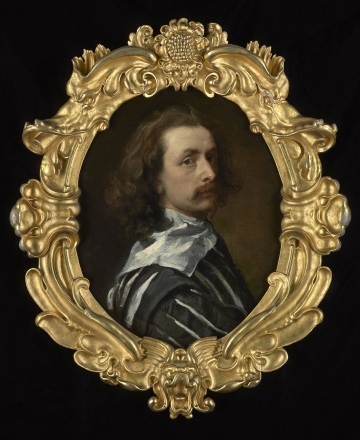The self-portrait by Van Dyck is the subject of a deferred export licence in order to give British museums an opportunity to find the £12.5 million required to stop it going abroad.
 The NPG, where the picture is currently on show drumming up donations, has started a campaign to raise £12.5 million to acquire the picture. They have raised £1.2 million so far – only 90% to find then in the remaining eight weeks. The Tate turned down the offer of a joint campaign and joint ownership pleading depleted reserves, and the Sunday Times has had the impertinence to reveal that the NPG had previously turned down an offer to buy the picture for a quarter less than they are now apparently desperate to pay.
The NPG, where the picture is currently on show drumming up donations, has started a campaign to raise £12.5 million to acquire the picture. They have raised £1.2 million so far – only 90% to find then in the remaining eight weeks. The Tate turned down the offer of a joint campaign and joint ownership pleading depleted reserves, and the Sunday Times has had the impertinence to reveal that the NPG had previously turned down an offer to buy the picture for a quarter less than they are now apparently desperate to pay.
The picture was bought at auction by London dealer Philip Mould in league with an American backer for £8.3 million in 2009, and it has now, they say, been sold to an American collector for £12.5 million.
As is customary on these occasions the hyperbolometer has been yanked over to Full Steam Ahead – “Give us as much smokescreen as you’ve got Mr Stoker”. “Aye aye Skipper”. Everyone suddenly believes this is a masterpiece that must be “saved” at all costs.
And yes it is an agreeable enough picture, a trifle tartily got up in its period frame, but it’s not worth the money and neither are we short of Van Dycks. Experts claim that the artist is depicting himself in the act of painting. Maybe so, but if he really is seeing himself in the act of execution, in order to get this view in a mirror he would have to be a left-hander and as his drawings demonstrate Van Dyck was no south paw.
The head is precisely what we expect of a living, alert character study by Van Dyck. The silk doublet is not quite so convincing. Its attempted bravura handling falls short for an artist we know to be a master of the deft, silky flourish. Did Van Dyck perhaps complete the head and then pass it down the studio line? It is after all dated to the last year of his life. It could be that the only part completed on the artist’s death was the head, and someone else, not quite as classy, finished it off. When they sold it in 2009 Sotheby’s described it as a work painted “with the utmost bravado and confidence; each sweep of the paint brush breathtakingly effective despite its deceptive simplicity.” They also cite numerous ‘probablys’ and ‘possiblys’ in its provenance.
The fact is we’ve been told very little about this picture: did it, for example, begin life as an oval? And where are the Tate and NPG 17th century experts with their considered analyses of this picture?
David Lee


